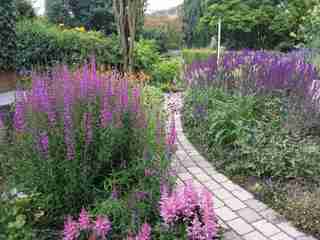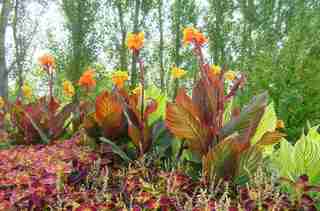All gardens, small or large, require some TLC to keep them looking fresh. This is the season to take stock of your blooms and assess which are thriving and which are not. “June is a good time of year to plant perennials and annuals in the cooler zones,” says Judie Brower of Tesselaar Plants . In warmer climates, however, it’s better to wait for temperatures to dip. But no matter where you live, keeping weeds under control should be a priority. “One of the most common mistake gardeners make is to let up on weeding,” says Brower. Weeds grow faster than annuals and perennials, and if not rooted out, they can quickly take over your garden. Another problem is not watering enough, which leads to less-than-hardy plants. Read on for Brower’s tips on how to plant and maintain a beautiful garden, and watch your landscape come to life.

Plant en masse Filling an entire bed with one type of plant is a dramatic design choice that also makes combating weeds easier. Use this checklist to choose a low-maintenance plant: Is it evergreen? Does it need little or no pruning? Does it do well with minimal water and pesticides? Brower recommends ‘Flower Carpet’ roses, which fit each of these criteria.

Consider height Plants naturally grow at different heights. Check their labels for the maximum height and follow this rule: Tall plants like this 'Tropicanna canna' go in back, short ones in front. If the plantings can be viewed from multiple angles, place taller ones in the middle with shorter varieties around them.

Group in odd numbers Plant each variety in groups of odd numbers: for example, three alstroemerias, seven globe alliums, five agapanthus, nine pansies, and five peonies. Groupings can be planted together or used to fill in empty holes, creating a lush garden bed.
Weed, deadhead, water, and mulch For a happy garden, “take care to weed and remember to deadhead your flowering plants,” says Brower. Removing spent blooms will help plants to produce new ones. To strengthen roots, water plants to a depth of six to 12 inches. And for fewer weeds and less frequent watering, apply three inches of mulch to your beds. You’ll have more time to enjoy your garden.
